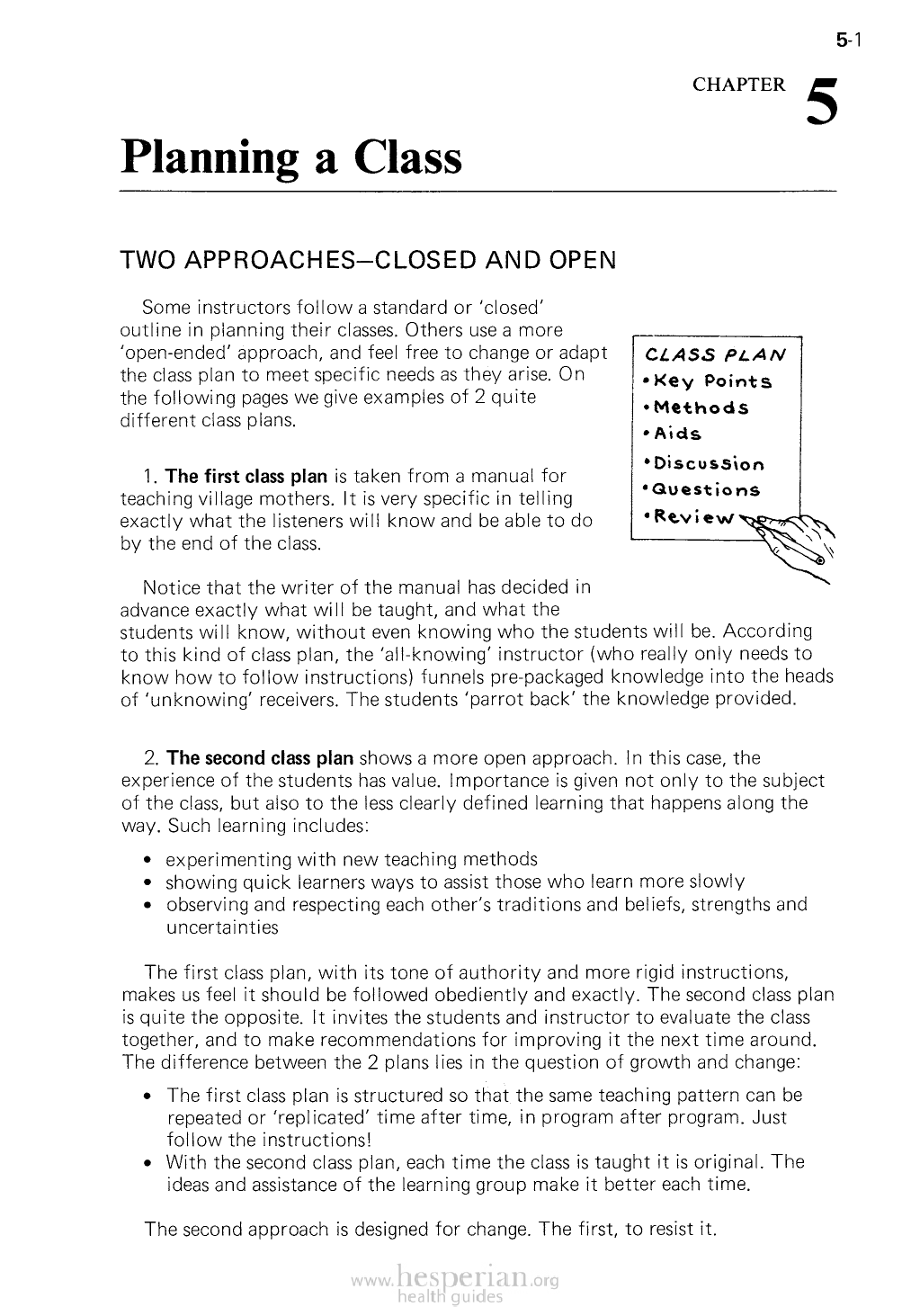
Planning a Class
5CHAPTER
5-1
TWO APPROACHES-CLOSED AND OPEN
Some instructors follow a standard or ‘closed’
outline in planning their classes. Others use a more
‘open-ended’ approach, and feel free to change or adapt
the class plan to meet specific needs as they arise.
On the following pages we give examples of 2 quite
different class plans.
1. The first class plan is taken from a manual for
teaching village mothers. It is very specific in telling
exactly what the listeners will know and be able to do
by the end of the class.
Notice that the writer of the manual has decided
in advance exactly what will be taught, and what the
students will know, without even knowing who the students will be. According to
this kind of class plan, the ‘all-knowing’ instructor (who really only needs to know
how to follow instructions) funnels pre-packaged knowledge into the heads of
‘unknowing’ receivers. The students ‘parrot back’ the knowledge provided.
2. The second class plan shows a more open approach. In this case, the
experience of the students has value. Importance is given not only to the subject
of the class, but also to the less clearly defined learning that happens along the
way. Such learning includes:
• experimenting with new teaching methods
• showing quick learners ways to assist those who learn more slowly
• observing and respecting each other’s traditions and beliefs, strengths and
uncertainties
The first class plan, with its tone of authority and more rigid instructions, makes
us feel it should be followed obediently and exactly. The second class plan is quite
the opposite. It invites the students and instructor to evaluate the class together,
and to make recommendations for improving it the next time around. The difference
between the 2 plans lies in the question of growth and change:
• The first class plan is structured so that the same teaching pattern can
be repeated or ‘replicated’ time after time, in program after program. Just
follow the instructions!
• With the second class plan, each time the class is taught it is original. The
ideas and assistance of the learning group make it better each time.
The second approach is designed for change. The first, to resist it.